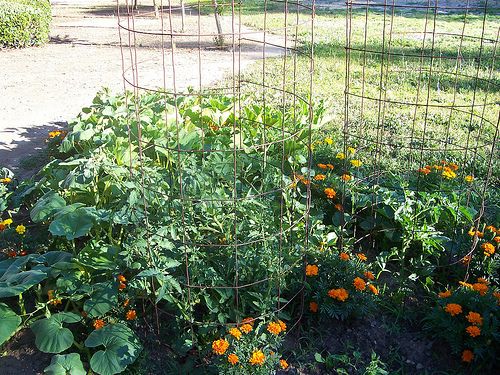
Gardeners toss around the term “NPK” a lot. You’ve certainly noticed these letters on the front of a box or bag of fertilizer while in a garden center or nursery, right?
It doesn’t matter whether the fertilizer is organic or inorganic; the garden scientists like to measure certain key ingredients in these things—for good reason. Each letter is desirable in higher amounts depending on what kind of plant (lettuce or tomatoes?) you’re growing or which part of the life cycle the plant is in (growing, blooming, or fruiting?).
Here’s the short answer:
- N stands for nitrogen. You probably knew that one. This nutrient is the leaf and stem developer, and adding nitrogen will get things growing fast. It’s always perfect for leafy veggies. After all, it’s the leafy part that we’re after in vegetables like cabbage, lettuce, Swiss chard, kale, etc.
- P stands for phosphorus. This nutrient is valuable for developing flowers and fruit—plus, it helps roots take quickly to the soil around them. If you’re frustrated by lots of leaves and stems developing on your fruiting crops like pumpkin or tomatoes—but with nary a fruit in sight—you may need a boost of phosphorus.
- K stands for potassium. Potassium promotes healthy root systems and helps the plants resist disease. It also works alongside the phosphorus in developing fruit. You’ll notice its importance if you’re growing root crops such as carrots or turnips.
One example of an organic fertilizer is blood meal. On the blood meal bag it’ll say “11-3-0,” which means there’s 11 percent nitrogen, 3 percent phosphorus, and zero potassium. The idea is to not only respond to what looks like a nutritional deficiency in your plants by adding the right nutrient, but to add them at the right time to prevent deficiencies and enhance healthy plant growth and food production. That’s good gardening right there.
So while the plant is actively growing, or if it’s a leafy veggie, you’ll want that first letter (“N”) to be a larger number than the other two numbers. When the plant begins to bloom, side-dress it with a fertilizer that has a higher middle letter (“P”). And it’s a good idea to add the last letter (K) potassium periodically for the general health of the plants.
If you want to get a little deeper, you can play scientist with an at-home soil test. You can measure not only the nutrients in your soil but the pH levels as well. It’s the perfect place to start. Still, for the price of a couple of cups of coffee, you can send a soil sample off to a soil-testing lab and you’ll get more juicy details. Just contact your local Cooperative Extension Office for a lab list.
Fine Gardening Recommended Products

Ashman Garden Cultivator (1Pack)
Fine Gardening receives a commission for items purchased through links on this site, including Amazon Associates and other affiliate advertising programs.

Attracting Beneficial Bugs to Your Garden, Revised and Updated Second Edition: A Natural Approach to Pest Control
Fine Gardening receives a commission for items purchased through links on this site, including Amazon Associates and other affiliate advertising programs.

SHOWA Atlas 370B Nitrile Palm Coating Gloves, Black, Medium (Pack of 12 Pairs)
Fine Gardening receives a commission for items purchased through links on this site, including Amazon Associates and other affiliate advertising programs.




















Comments
Log in or create an account to post a comment.
Sign up Log in